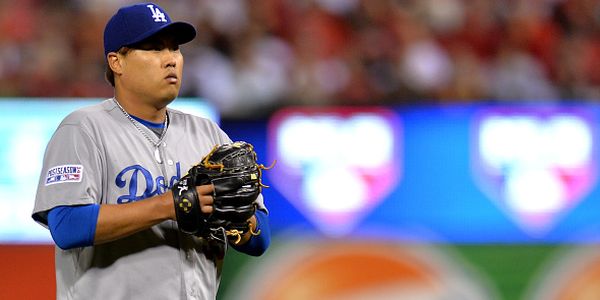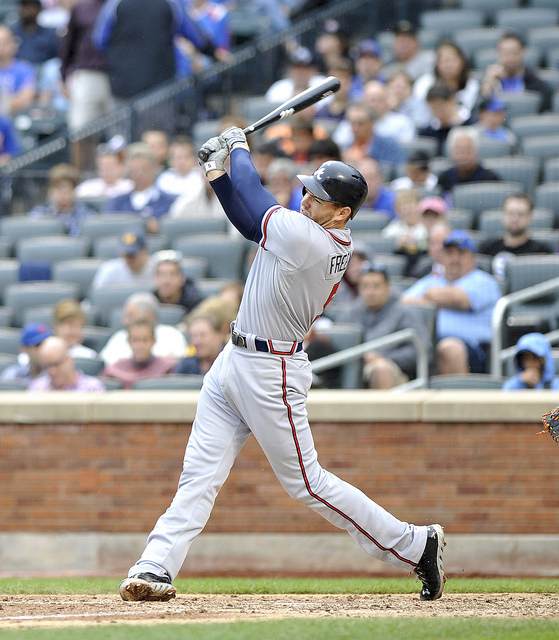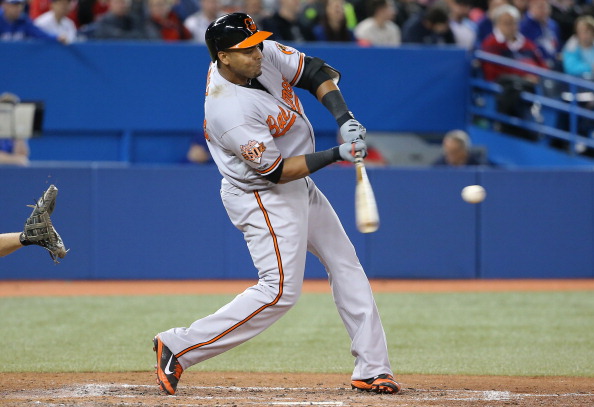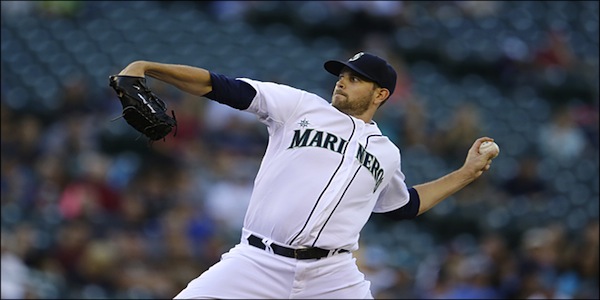2015 Fantasy Baseball Draft Guide: Names or Numbers? Part II

This is Part II of my Names or Numbers series (Part I is here), designed to help you keep an open mind on draft day while pursuing maximum value with each pick. I do a lot of mock drafts each preseason, and I highly recommend that you do the same. If you aren’t doing a lot of mock drafts, well, why not? Practice, practice, practice. It’s the best way to test new strategies and see where you’re able to get the highest return on each investment. Remember, as fantasy owners, we’re in pursuit of numbers, not the sexy names that your league mates are familiar with. It’s fairly common that those ‘known’ commodities come with an inflated cost on draft day and that’s what you want to avoid.
I’m going to show you a couple of side by side comparisons that may surprise you. I want to look at both the players’ production from last season along with their projections for the coming season to better tell the whole story. I know that one season sample sizes are insufficient and every projection system has its flaws. I get it. With that said, I think you’ll find this helpful when trying to maximize your return on investment on draft day. Let’s get it started.
These two players clearly don’t have stats that are mirror images of each other. There’s a fairly large gap in home run production here, as well as batting average. We know how fickle batting average can be, so it’s worth noting that Player A had three consecutive seasons north of .300 prior to last year’s .263. Player B has yet to top 25 home runs in his career. Let’s see what Steamer thinks of these two heading into 2015.
Player A is Freddie Freeman. Player B is David Ortiz.
I’ll own zero shares of Freeman at his current top-30 price point. I really like the player and at just 25-years old, I’m confident in saying that we haven’t seen Freeman’s best season yet. His consistent ability to make hard contact and carry elite line drive rates set him up to be a steady source of batting average year in and year out. But from a fantasy perspective, the line drives cap his fantasy appeal because he’s limiting his home run hitting upside. It’s very Joey Votto-esque in a sense.
His average batted ball distance continues to improve each season, and he has the physical build of someone that projects to hit for elite power each season. Unfortunately, we keep waiting for it to happen and it just hasn’t come yet. As a near top-25 draft pick, you’re paying for power and run production that just isn’t assured to come this season. Add the fact that his supporting cast in Atlanta is a shell of what it’s been in past seasons, and Freeman is likely to see his counting stats dip in 2015 as well. I’d draft him in the late 4th/early 5th rounds of a draft, but I’ll never get the chance to with an ECR of 26.
As for Ortiz, everyone keeps waiting for the other shoe to drop, but he just keeps on producing. In his age-38 season Ortiz was again one of the best power hitters in the game, as one of only seven players to reach the 30 home run/100 RBI plateau. The combination of constant shifts-against and a dip in his line drive rate kept Ortiz’s BABIP, and subsequently batting average, down when compared to seasons past.
The Red Sox made plenty of offseason upgrades offensively, which bodes well for Ortiz’s counting stats as we project his 2015 line. His strikeout numbers were up, including the highest O-Swing% of his career, but a slight decline for Ortiz is built into his price when you consider where the other 30/100 guys are being selected. Despite the rise in K’s, there’s nothing in his offensive profile that makes you feel like he’s approaching a cliff. Steamer’s numbers for Ortiz are right in line with where the expert consensus ranks have him, essentially a 6th round pick.
I’ll be passing on Freeman in the third and looking to grab Big Papi in the sixth round if I have yet to address the first base position when the time comes.
Now let’s take a look at a couple of National League left-handed starting pitchers that have a vastly different public perception heading into 2015.
The difference in ECR here jumps off of the page. Yes, Player A threw more innings last season than Player B, and there’s definitely value in that. Otherwise, it’s hard to understand why there’s such a discrepancy here. What does Steamer think of these two southpaws?
Player A is Cole Hamels. Player B is Hyun-Jin Ryu.
Building on a strong 2013 debut state side, the 27-year old Korean-born Ryu was outstanding in 2014. His numbers improved across the board. His K/9 went up, his BB/9 went down, and he induced more swinging strikes than in the previous season. His 2.62 FIP was good for 6th best in baseball last season, and while he had a bit of home run luck (5.9%), his strand rate/ground ball numbers show that he was a tad unlucky on balls in play.
Bottom line, Ryu is for real. If you’re silly enough to use wins as a fantasy stat still, then that’s another boon for Ryu’s fantasy stock especially in comparison to Hamels as long as he’s in Philly. Ryu has one of the most effective change-ups in the game, making him nearly split proof as Brett Talley pointed out last season. There just aren’t many flaws to be found here.
Fantasy drafts are all about value, and while there’s nothing wrong with taking Hamels early, it’s extremely evident that Ryu is undervalued right now. He doesn’t crack the top-30 starting pitchers in the ECR from FantasyPros, while Steamer has him as a top-15 starter, two spots ahead of Hamels. On draft day you won’t need to select Ryu ahead of Hamels, but you should have your eye on the Dodgers left-hander once the top-20 starters are off the board.
You can follow Ryan on Twitter @RyNoonan.








